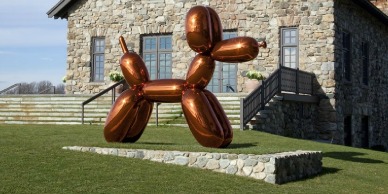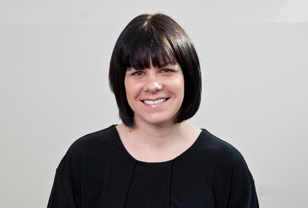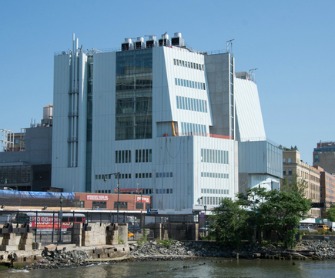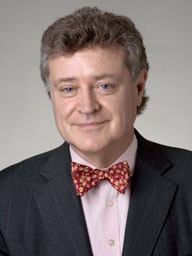The National Endowment for the Arts released three reports today on arts participation, barriers to it, the impact of the arts and culture industries on the economy–all information from 2012. There’s much to digest. Here’s the link to them.
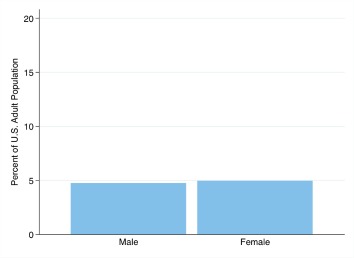 But I’m going to paste here just four charts from them that speak to one aspect of the environment for arts museums. Each one tracks interest in going to an art exhibit by people who had not been to an art museum in the last 12 months. They were asked:
But I’m going to paste here just four charts from them that speak to one aspect of the environment for arts museums. Each one tracks interest in going to an art exhibit by people who had not been to an art museum in the last 12 months. They were asked:
During the last 12 months, was there a performance or exhibit that you wanted to go to, but did not?
Chart No. 1: As you can see, about 5 percent of both females and (a little less) males said they had been interested in going to see an art show. That’s it.
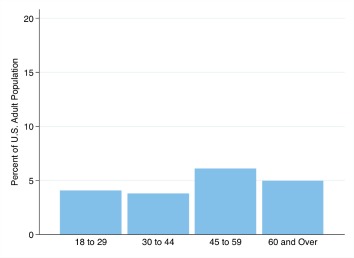 Chart No. 2: When you cut the data by age, younger people–aged 19 to 29 and aged 30 to 44–are much less interested in going to art exhibits than are older people. The 45 to 59 age group is the only one exceeding 5 percent–and just by a percent at most.
Chart No. 2: When you cut the data by age, younger people–aged 19 to 29 and aged 30 to 44–are much less interested in going to art exhibits than are older people. The 45 to 59 age group is the only one exceeding 5 percent–and just by a percent at most.
Chart No. 3: The race/ethnicity data is also no surprise, really. Non-Hispanic whites are at 5 percent; African-Americans/Hispanic are a little below that, and Other is a little above that. I’m guessing–but based on my knowledge of similar previous surveys, the most interested “other” are Asians, who have had higher arts participation rates in the past.
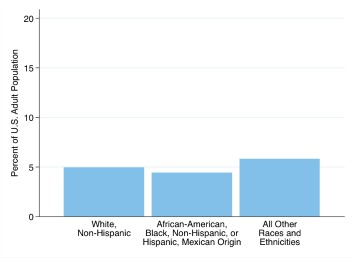 What do all of these charts say? That, across the whole population, interest in attending art exhibits is low.
What do all of these charts say? That, across the whole population, interest in attending art exhibits is low.
I think it also means that museums that are programming for the masses–the 95 percent of those not already going–are making a mistake. They just aren’t that interested in art, and it’s doubtful that they will be drawn in huge numbers to art museums, no matter what gimmick a museum tries.
Instead, museums should focus on that 5 percent of the population, what the NEA survey called “interested non-attendees.”
Why aren’t these people going to art museums, even once a year? See the last chart.
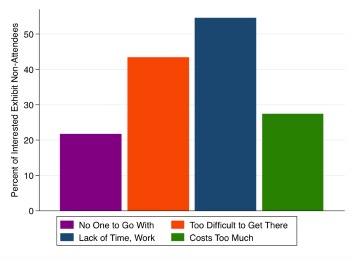 According to the NEA survey, the biggest factor was–wait for it–no time. More than 50 percent say they’ve got too much to do or too much work, outside the museum-going. The next reason was “too difficult to get there.” Again, based on past knowledge of other surveys, this is the “there’s nowhere to park” response. Museums outside big cities have to figure out the parking problems.
According to the NEA survey, the biggest factor was–wait for it–no time. More than 50 percent say they’ve got too much to do or too much work, outside the museum-going. The next reason was “too difficult to get there.” Again, based on past knowledge of other surveys, this is the “there’s nowhere to park” response. Museums outside big cities have to figure out the parking problems.
Only then came cost–it looks like about 28 percent. To me, this means seeking more underwriting from donors for free days or evenings. I am regularly told by museum directors (and others) that trustees push for big attendance numbers for special shows. Fine, then development directors should priorities asking them to help offer free admission–or reduced admission–at certain times.
Finally, the last big reason is that the interested non-attendees have no one to go with. Sure, it is more fun for most people to view art with someone(s). And in some cities doing anything alone is not comfortable for most people. Museums should attempt to change that, to emphasize occasionally that museums are wonderful experiences for someone on their own.
It is true that the vast majority of people go to museums with someone. Art museums are social spaces. At MoMA, Glenn Lowry told me not too long ago, the number is 85 percent–if memory serves. But they’re not just social spaces. What about luring the other 15 percent, not with singles nights, but just a little attention to the experience for someone on his or her own?
Photo Credits: Courtesy of the NEA

